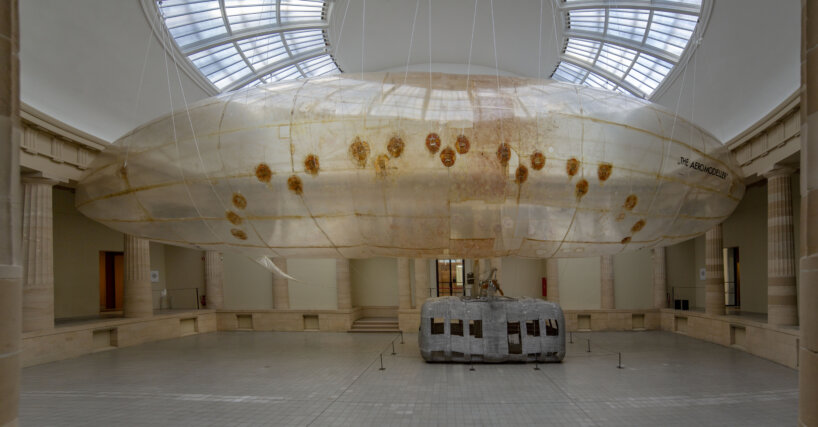On the occasion of its twentieth anniversary, the S.M.A.K. is presenting, 'The Collection (I): Highlights for a Future'. The exhibition comprises some 150 works from the collection, which, just as with the opening in 1999, fill up the entire museum building. With this exhibition, S.M.A.K. wishes to primarily take a look at the present and the future.
Meanwhile, the MSK presents a new ensemble of hidden treasures from the museum's rich drawing collection, with public favourites, such as James Ensor, George Minne, Léon Spilliaert, Gustave Van de Woestyne and Frits Van den Berghe.
Contemporary history of art
Thanks to a group of progressive art lovers in 1975, an autonomous Museum for Contemporary Art was established in the uppermost halls of the Museum of Fine Arts Ghent (MSK) with Jan Hoet (1936-2014) as its first curator. With exhibitions never seen before in Flanders, he wrote contemporary history of art up until 1999 here. Since the founding of the Museum of Contemporary Art, the desire for obtaining its own building was likewise in full force. This wish became reality in 1999 with the opening of the S.M.A.K.
Three principle works back to the MSK
'The Aeromodeller' by Panamarenko is exhibited again in the semi-cycle of the MSK, where it was presented in 1980 during the important exhibition, 'Art in Europe after '68'. 'Wirtschaftswerte' returns to the hall in the MSK where the work was originally conceived by Joseph Beuys on the occasion of the same exhibition. 'Le Décor et son Double' is being shown again at the place where Daniel Buren first exposed the work during 'Chambres d'Amis' in 1986. The private portion of Buren's 'Le Décor et son Double', which made up a part of the Herbert Foundation's collection, is opened to the public for one Thursday per month during the exhibition. Every first Thursday of the month the S.M.A.K. as well as the MSK shall also remain open longer for a community night at the museum.
Joseph Beuys, 'Wirtschaftswerte' (1980)
One of the wounds that must be healed according to Joseph Beuys is of a historical nature: the division of Germany and of the Western world as a consequence of World War Two. In this respect, Wirtschaftswerte (economic values) is Beuys' most political work.
It consists of metal shelves with provisions from the DDR placed upon them. The soberness of the paper or cardboard packaging stands in stark contrast with the same products from the West, which are blatantly promoting themselves there in the capitalistic supermarkets with their brashly garish colours.
The content and the nutritional value of these products from the communist East is exactly the same as those from the Western capitalistic world and yet appear to be much more meagre, less fresh and less nutritious. The manner by which edible goods are packaged and presented clearly has an influence upon consumption.
Daniël Buren, 'Le Décor et son double', 1986 & 2011
In 1986 the City of Ghent was the setting for a unique exhibition, Chambres d'amis, whereby more than fifty residents had opened up their homes to a contemporary artist. Daniel Buren opted for the guest room of his friends, the collectors Annick and Anton Herbert, in the neighbourhood of the Coupure. On the uppermost half of the walls of the guest quarters his characteristic 'outil visuel' was rendered on white and fuchsia-striped paper according to a diagonal dividing line.
Given that this work was realised in private rooms and could not be visited by the public – which was in direct opposition to the objective of the exhibition – a copy of this guest room was erected in the former tapestry hall, the present-day Forum, of the MSK. With this difference that his 'outil visuel' was rendered in the same colour and according to the same diagonal dividing line on the wall, but this time on the lowermost half instead of the uppermost, by which both versions of Le Décor et son Double perfectly complemented each other.
Panamarenko, 'The Aeromodeller', 1969-1971
In his early flying machines that were propelled by manpower, Panamarenko exploited the ergonomic relationship between man and machine. Together they form an organic whole. His poetic sculptures stand in stark contrast with the contemporary technology by which humans of today are traveling to the stars. It seems as if the artist wants to redo the discovery of the aeroplane. To this end, he looks to the birds, insects and pre-historic creatures.
For his sculptures that are realised in an archaic manner, Panamarenko used exceptionally fragile materials. In this way, he reminds us of the fact that the most sophisticated technology is also extremely vulnerable. The name of the airship, The Aeromodeller (the aeroplane model builder), was contrived by his colleague artist Richard Long (°1945). Hereby he references both the artist as well as the eponymous periodical, which was established in the 1940's, and is still published today.
